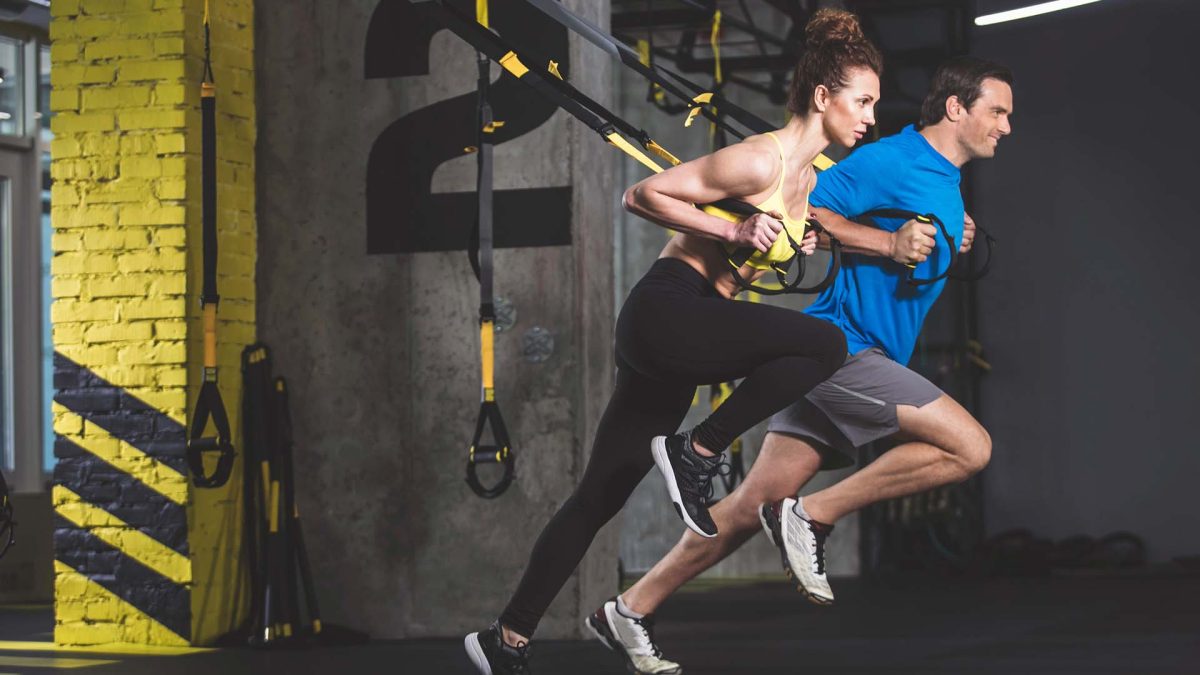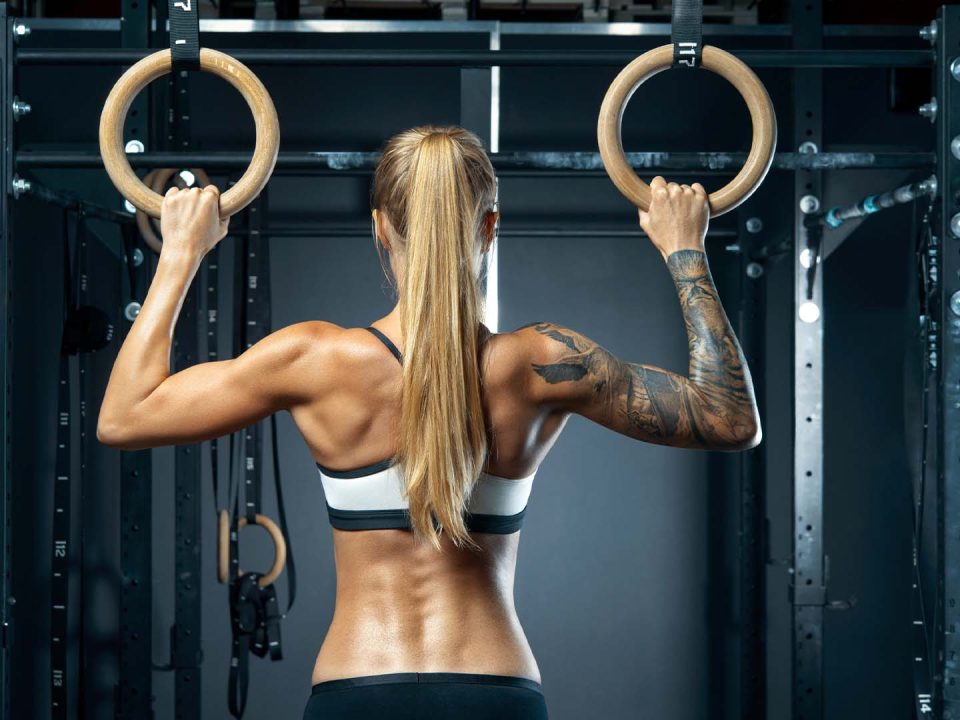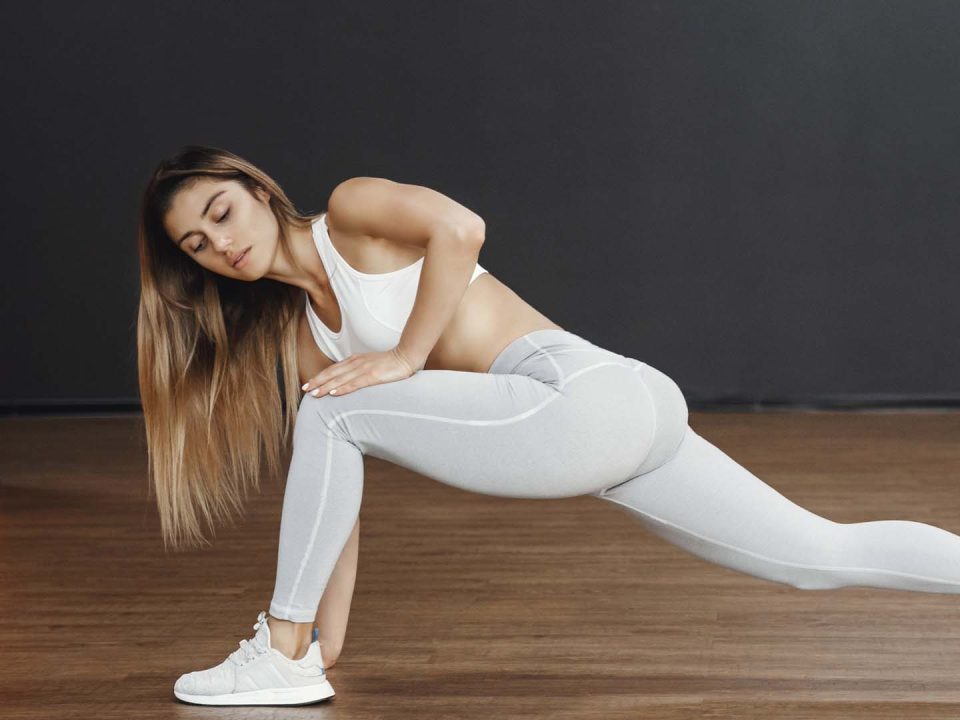Ready to transform your fitness journey? Functional fitness equipment is revolutionizing how we approach exercise, making workouts more effective and meaningful for everyday life. This innovative approach to fitness has seen remarkable growth, with the global market expected to reach $5.5 billion by 2031, according to Allied Market Research.
Think of functional fitness equipment as your personal toolkit for building real-world strength. Unlike traditional gym machines that isolate muscles, these versatile tools help you move naturally and build practical strength. Whether you're reaching for groceries, playing with kids, or tackling home projects, functional fitness prepares you for life's daily challenges.
What makes this equipment special? It's designed to support natural movement patterns, engaging multiple muscle groups simultaneously. From suspension trainers to medicine balls, each piece serves a purpose in enhancing your overall fitness. The beauty lies in its adaptability – you can modify exercises to match your fitness level, making it perfect for beginners and athletes alike.
The rise in home fitness has sparked increased interest in functional equipment. Market.us reports a significant shift toward functional training, with more people recognizing its practical benefits. This equipment isn't just about getting stronger – it's about moving better, feeling better, and living better.
Ready to dive deeper? Let's explore how functional fitness equipment can transform your workout routine and enhance your daily life.
Understanding Functional Fitness Equipment
Functional fitness equipment transforms everyday movements into effective workouts. Unlike traditional machines that isolate specific muscles, these tools enhance natural motion patterns you use daily. Think of lifting groceries, playing with kids, or climbing stairs – functional equipment helps you do these better.
The most popular functional fitness tools include resistance bands, kettlebells, and suspension trainers. Medicine balls let you twist, throw, and catch naturally, while battle ropes build endurance through dynamic movements. Foam rollers and balance boards focus on mobility and stability, essential for daily activities.
Traditional gym machines often lock you into fixed positions. According to Allied Market Research, functional equipment offers more freedom of movement, engaging multiple muscle groups simultaneously. This approach builds practical strength that transfers directly to real-world activities.
The core principles of functional training focus on movement patterns rather than isolated exercises. Push, pull, squat, lunge, rotate, and carry – these fundamental movements form the foundation of functional workouts. Market.us reports that this training style improves overall body coordination and reduces injury risk.
Smart storage solutions make functional equipment perfect for home gyms. Most items are compact and versatile – a single kettlebell can replace several traditional machines. Plus, many tools like resistance bands are portable, letting you maintain your fitness routine anywhere.
Your functional fitness journey starts with basic equipment that grows with your needs. Begin with resistance bands and a foam roller, then add kettlebells or suspension trainers as you progress. This step-by-step approach helps build a practical, effective home gym without overwhelming you.
Cost Analysis and Investment
Setting up a functional fitness space doesn't have to break the bank. A basic functional fitness setup starts at around $1,310, while premium setups can reach $19,070, according to Fixr.com's comprehensive cost analysis. This range offers flexibility for different budgets and fitness goals.
Starting small is smart and budget-friendly. Begin with versatile basics like resistance bands ($10-30), a quality jump rope ($15-40), and adjustable dumbbells ($200-400). These foundational pieces deliver excellent value and effectiveness for your investment.
Compared to traditional gym equipment, functional fitness gear often requires less space and money. While a traditional home gym setup typically costs between $3,500 and $25,000, functional equipment offers similar benefits at a lower price point. Plus, many pieces serve multiple purposes, maximizing your investment.
For those ready to expand, consider these mid-range investments:
- Kettlebells set: $100-300
- Suspension trainer: $150-200
- Medicine balls: $20-50 each
- Foam rollers: $20-40
- Yoga/exercise mats: $20-100
Smart money-saving strategies include:
- Buy equipment gradually as your skills advance
- Look for package deals from reputable retailers
- Consider high-quality used equipment
- Watch for seasonal sales
- Share costs with a workout partner
Remember, quality matters more than quantity. Invest in well-made, durable pieces that match your fitness goals and available space. This approach ensures your functional fitness investment delivers long-term value and results.
Benefits for Different Age Groups
Functional fitness equipment stands out as a versatile solution for every age group. Whether you're just starting your fitness journey or maintaining an active lifestyle in your golden years, these tools adapt to your needs. Recent market analysis shows growing adoption across all age brackets, with particular benefits for seniors and youth athletes.
For beginners and intermediate fitness enthusiasts, functional equipment offers adjustable resistance levels and scalable movements. You can start with basic exercises and gradually increase complexity as your strength and confidence grow. According to Market.us, this adaptability makes it particularly effective for those new to exercise.
Seniors benefit significantly from functional fitness equipment's low-impact nature. The equipment supports natural movement patterns, helping maintain independence in daily activities. Balance boards and resistance bands, for example, help improve stability and strength without putting excessive stress on joints.
Young athletes gain a strong foundation through functional training. The equipment helps develop core strength, coordination, and proper movement patterns – essential skills for any sport. Multi-directional movements and variable resistance options make it perfect for sport-specific training.
For those managing health conditions, functional equipment provides safe exercise options. The Allied Market Research report highlights how these tools support rehabilitation while building strength and mobility. You can easily modify exercises to accommodate physical limitations while still making progress.
Remember, functional fitness isn't about age – it's about moving better in everyday life. Whether you're 16 or 60, these tools help you build practical strength and mobility that transfers to daily activities. Start with basic movements and progress at your own pace for the best results.
Training and Performance Benefits
Ready to transform your daily movements into powerful workout opportunities? Functional fitness equipment offers incredible benefits that go beyond traditional gym results. This innovative approach to training enhances your real-world strength and agility in ways you'll notice every day.
Think about reaching for high shelves or playing with your kids - functional training prepares you for these moments. Studies show that using equipment like suspension trainers and resistance bands improves core stability and balance, making everyday tasks feel easier. According to Market.us, users experience notable improvements in coordination and mobility within weeks of starting.
Athletes particularly benefit from functional equipment's versatility. A medicine ball workout, for example, builds explosive power for sports while strengthening the same muscles you use for lifting groceries. The Allied Market Research report highlights how this equipment helps prevent common injuries by teaching proper movement patterns.
Your body moves in multiple directions throughout the day, and functional equipment trains you for exactly that. Unlike traditional machines that lock you into fixed positions, tools like kettlebells and stability balls challenge your body to maintain control through various planes of motion. This freedom of movement builds practical strength that translates directly to better performance in sports and daily activities.
Want to reduce your risk of back pain? Functional training equipment helps correct muscle imbalances that often lead to injuries. By engaging multiple muscle groups simultaneously, you develop balanced strength that protects your joints during everyday movements. Plus, the adaptable nature of this equipment means you can modify exercises as you build strength, ensuring safe and steady progress.
Making Smart Purchase Decisions
Ready to invest in functional fitness equipment? Let's make sure you get the most value for your money. Start with versatile basics like resistance bands, a quality jump rope, and adjustable dumbbells. These foundational pieces deliver maximum benefits while taking up minimal space.
Space planning is crucial before any purchase. Measure your workout area and add an extra 2-3 feet around each piece for safe movement. According to Hydrow's home gym guide, a functional home gym can thrive in as little as 50 square feet.
When comparing equipment, prioritize durability over initial cost. A $200 adjustable kettlebell that lasts years offers better value than a $50 model that needs replacement annually. Look for equipment with solid warranties and positive user reviews spanning months or years of use.
Here's a smart starter kit for under $500:
- Resistance bands set ($30-50)
- Adjustable dumbbells ($200-300)
- Stability ball ($25-40)
- Jump rope ($15-30)
- Yoga mat ($20-40)
Consider equipment that serves multiple purposes. A suspension trainer can replace several single-purpose machines while taking up minimal space. According to Fixr.com, multi-functional equipment can save you 30-40% compared to buying separate pieces.
Remember, quality functional fitness equipment is an investment in your health. Choose pieces that match your fitness goals, space constraints, and budget while prioritizing versatility and durability.
Conclusion
Functional fitness equipment stands as a game-changing investment in your health journey. The versatility and effectiveness of this equipment make it a smart choice for anyone looking to improve their daily movement patterns and overall strength. While initial costs can range from $1,310 to $19,070, the long-term benefits far outweigh the investment.
Research from Allied Market Research shows growing demand for functional fitness solutions, reflecting their effectiveness in real-world applications. This equipment helps bridge the gap between gym workouts and daily activities, making it particularly valuable for long-term health and wellness.
Looking ahead, the functional fitness equipment market continues to evolve with innovative designs and smart technology integration. According to Market.us, we can expect to see more compact, versatile, and tech-enabled equipment options hitting the market. These advancements will make functional fitness even more accessible and effective for users of all fitness levels.
Remember, the best functional fitness setup is one that matches your goals, space, and budget. Whether you start small with basic equipment or invest in a complete home gym, the key is choosing equipment that supports your movement patterns and helps you stay consistent with your fitness journey.
Expert Tips and Recommendations
Ready to make the most of your functional fitness equipment? Let's dive into some game-changing tips that'll keep you safe, strong, and successful in your fitness journey.
Smart Safety First
Keep a clear workout zone of at least 6 feet around your equipment. Always check for loose bolts or worn parts before each session. Start with lighter weights and perfect your form before increasing intensity. Your body will thank you later!
Equipment Care Essentials
Wipe down your equipment after each use with a mild cleaning solution. Regular maintenance isn't just about cleanliness – it's about longevity. According to Fixr.com, proper care can extend equipment life by up to 10 years, protecting your investment.
Workout Programming Made Simple
Start with 2-3 full-body sessions per week. Focus on fundamental movements: push, pull, squat, hinge, and carry. Market.us research shows that consistent, varied movement patterns deliver the best results for overall fitness improvement.
Pro Training Tips
- Warm up with dynamic movements for 5-10 minutes
- Combine strength and cardio exercises for maximum efficiency
- Rest between sets: 30-60 seconds for endurance, 2-3 minutes for strength
- Track your progress with a workout journal or fitness app
Expert Insights
According to Allied Market Research, successful functional fitness programs focus on movement quality over quantity. Start slow, build gradually, and celebrate small wins. Remember, consistency beats intensity every time.
Remember to listen to your body and adjust workouts as needed. Your functional fitness journey is unique – embrace the process and enjoy the strength you're building for real-life activities.
Resources and Further Reading
Ready to dive deeper into functional fitness? We've gathered the best resources to help you make informed decisions about your fitness journey. These trusted sources offer valuable insights and expert guidance.
Expert Guides and Reviews
- ACE Fitness Guide to Functional Training - Comprehensive overview of functional movement patterns
- NASM Functional Training Guidelines - Professional insights on exercise selection and programming
- Breaking Muscle Equipment Reviews - Detailed analysis of popular functional fitness tools
Scientific Research
The Journal of Strength and Conditioning Research has published numerous studies supporting functional fitness benefits:
Community Resources
Connect with others and learn from their experiences:
- r/functionalfitness - Active Reddit community sharing tips and success stories
- Functional Training Forum - Discussion board for equipment recommendations
- CrossFit Journal - Articles on functional movement and equipment use
Market Research
Stay informed about equipment trends and pricing:
Remember to consult fitness professionals before starting any new training program. These resources will help you make educated decisions about your functional fitness journey.






